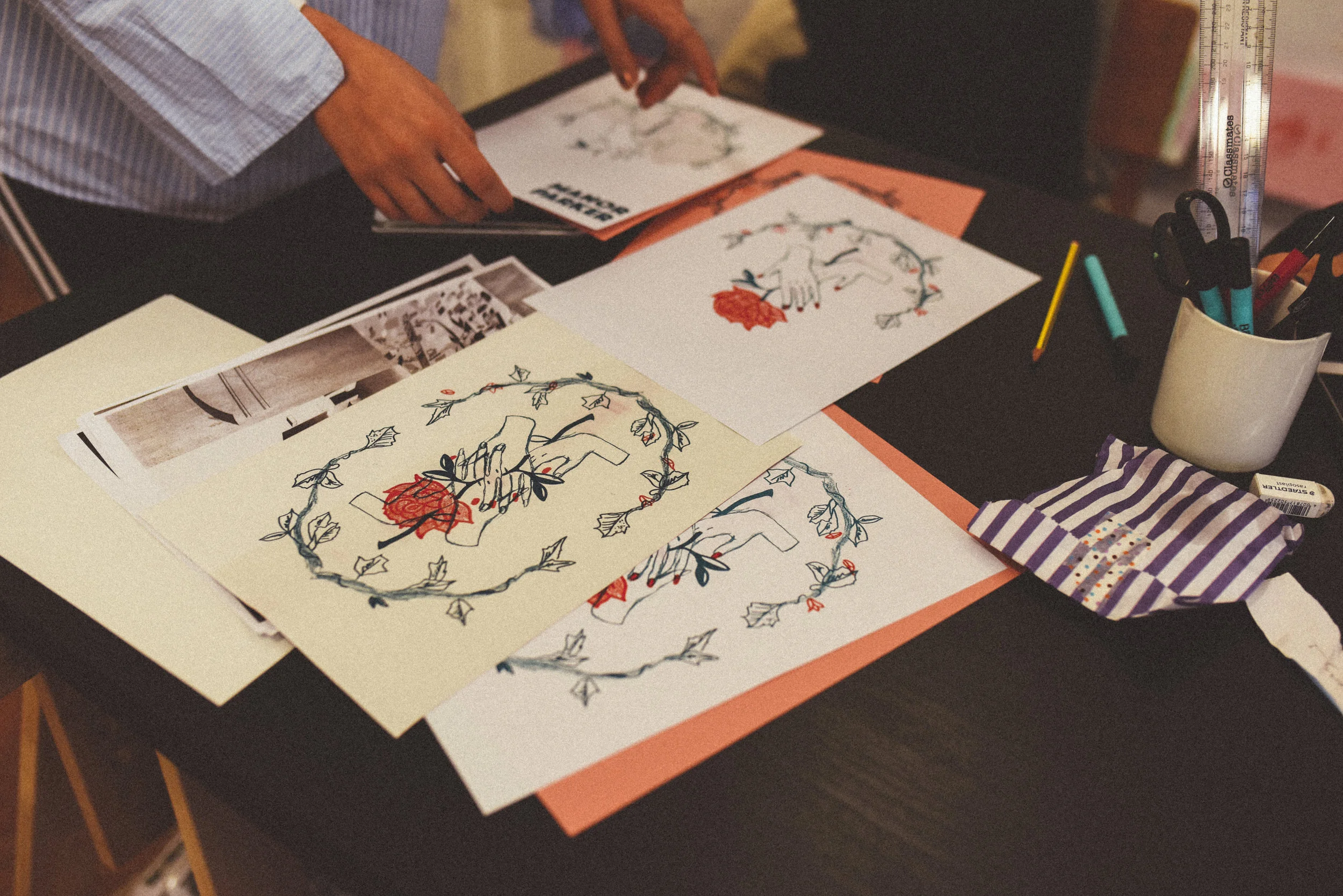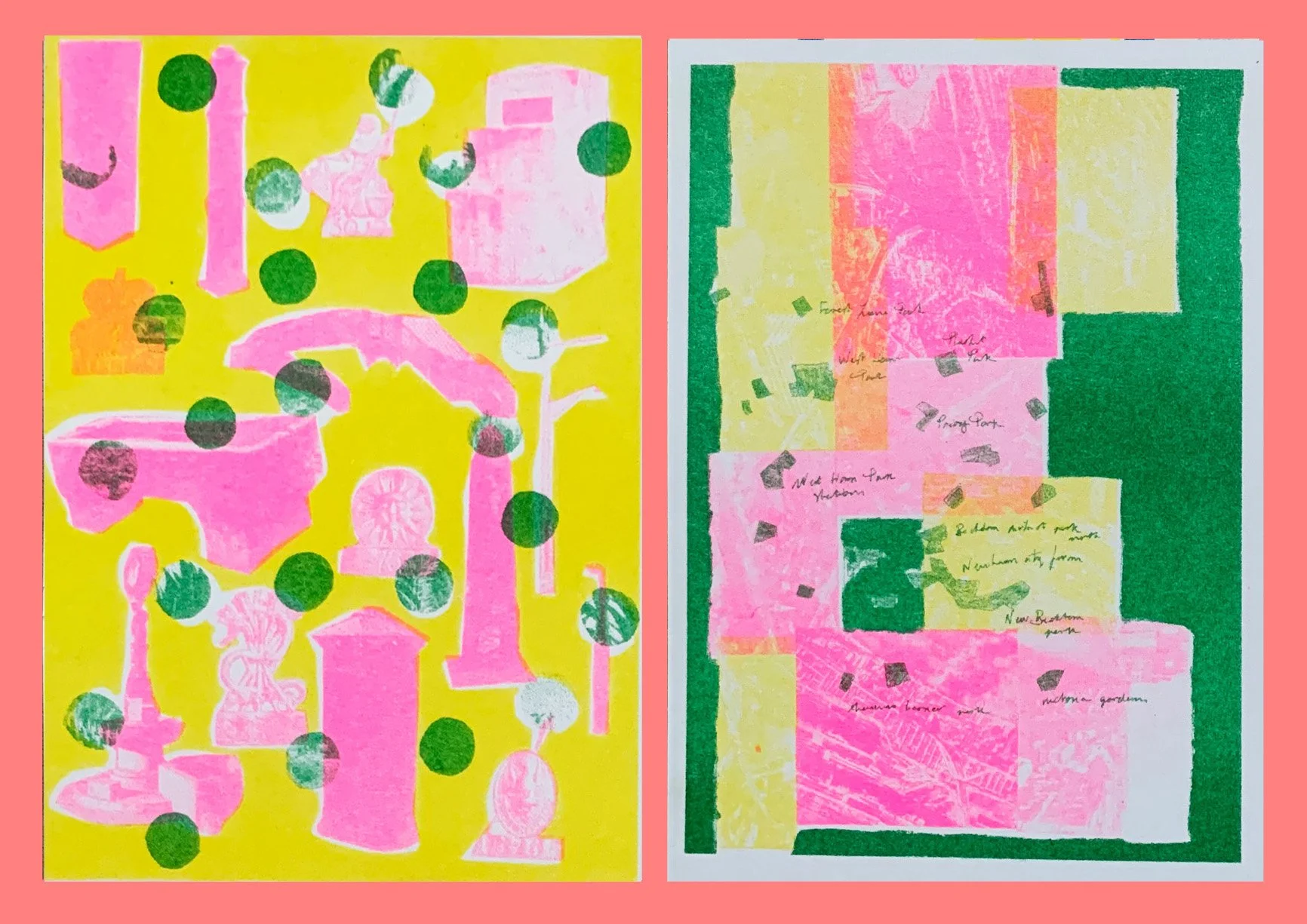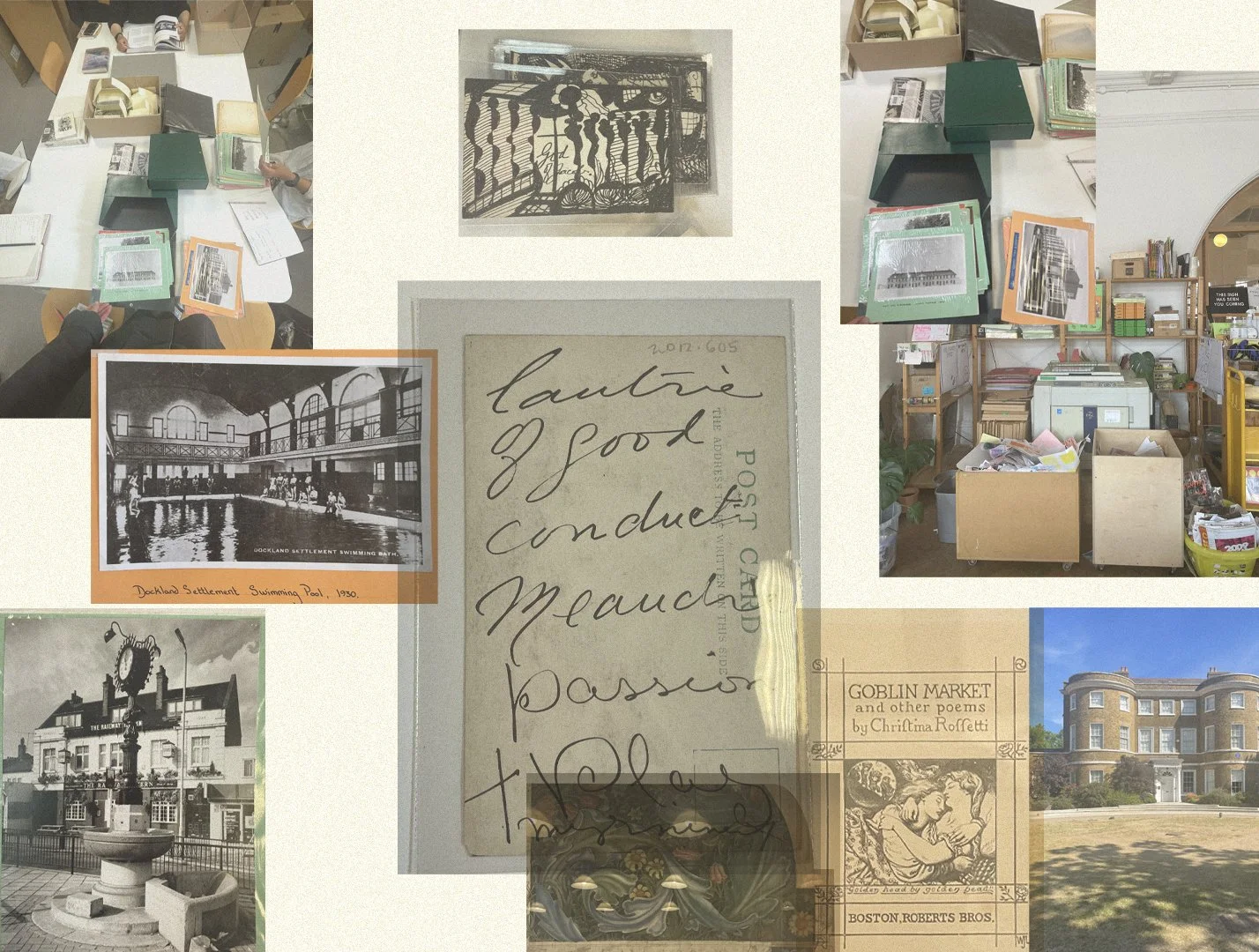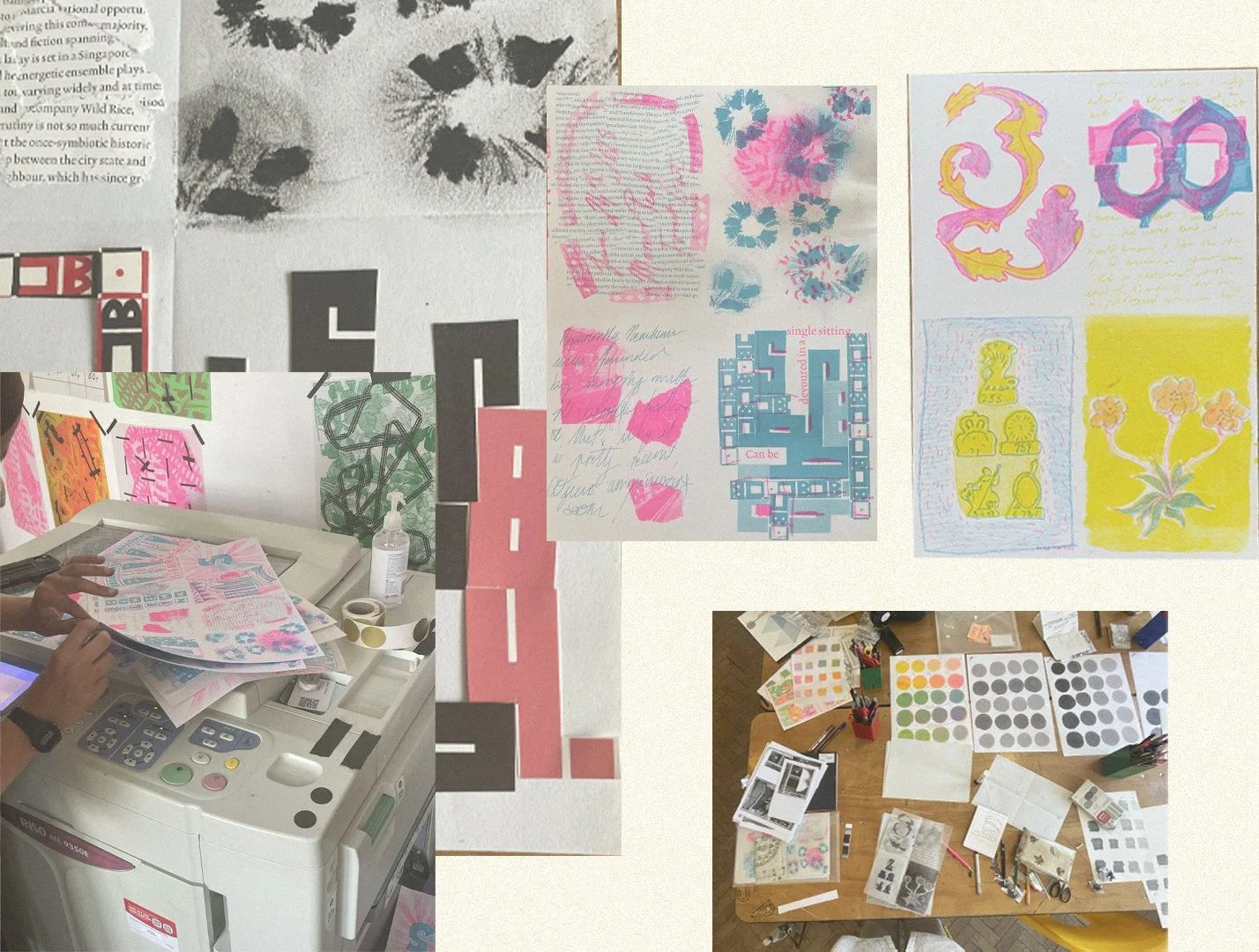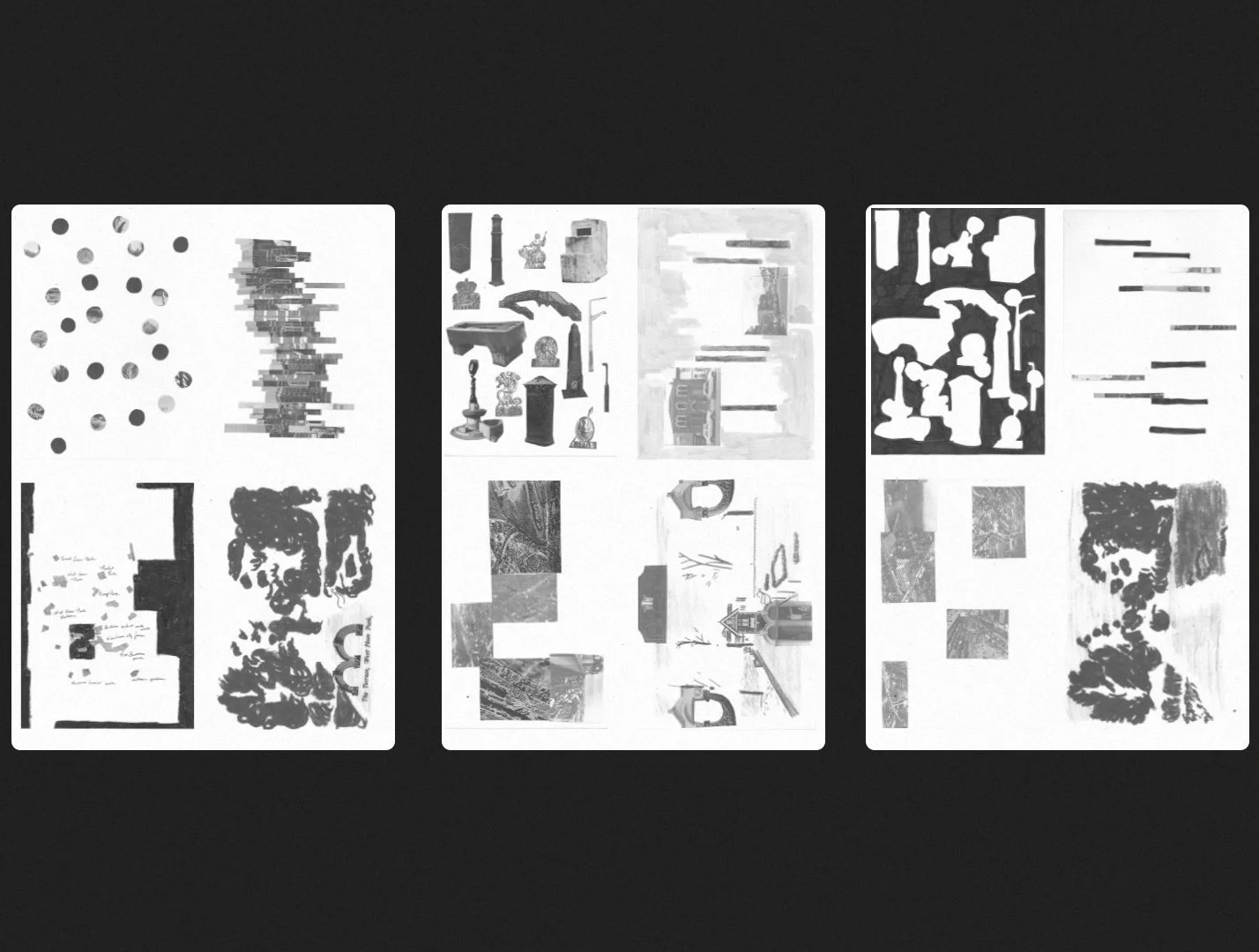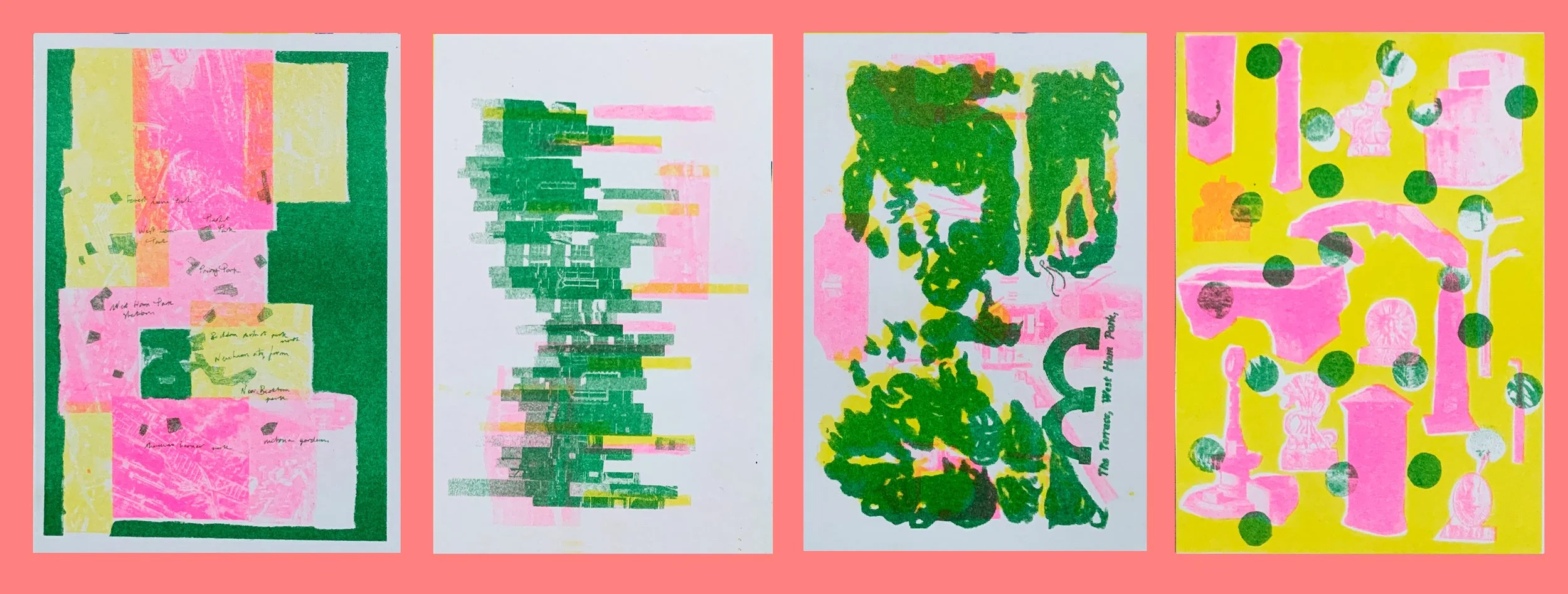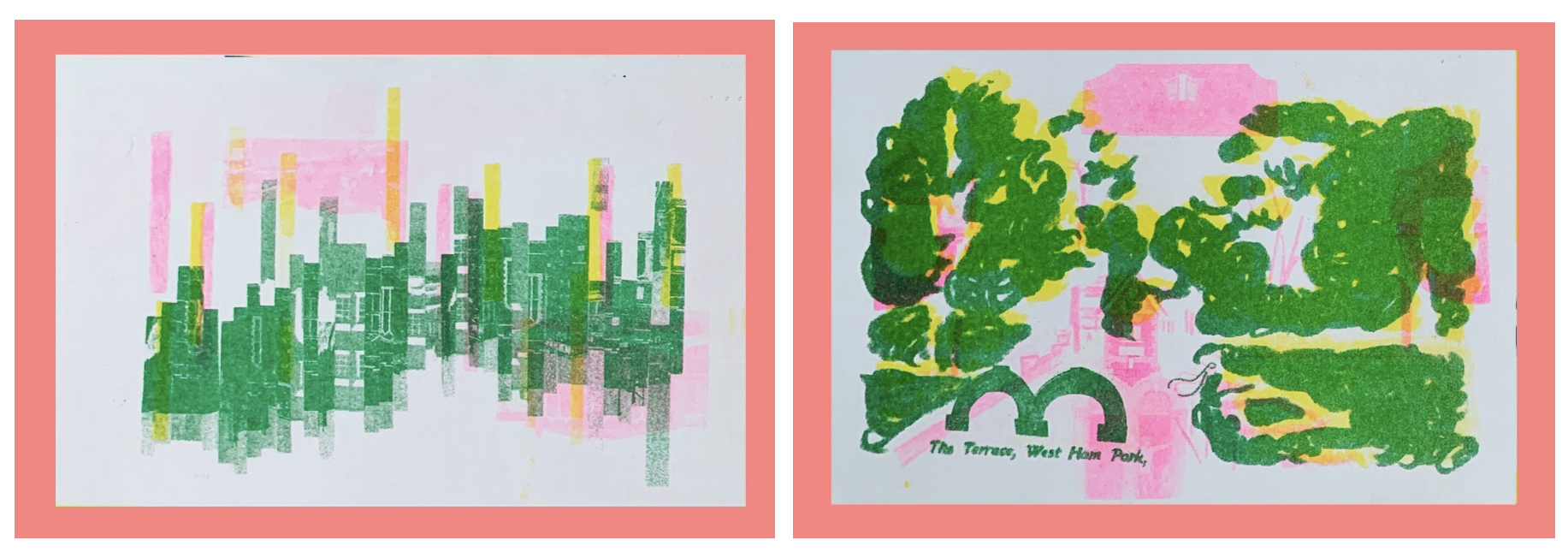Drawing on Heritage: Amandine Forest-Aguié
/Earlier this summer, Rabbits Road Press commissioned four local artists to develop a set of risograph printed cards celebrating any aspect of Newham’s heritage that spoke to them. Supported by Newham Heritage Month, the project, Drawing on Heritage, was inspired by the work of celebrated local artist Magde Gill (1882-1961) who created many drawings on postcards. As part of their artist residency, each of the commissioned artists, Amandine Forest-Aguié, Maryam Huq, Jo Wood, and Maryam Adam, spent one month visiting sites, doing research and learning about risograph printing. In this Drawing on Heritage blog series, each artist shares their residency experience. Join us for our Drawing on Heritage: Postcard Launch event which will be part of Newham Heritage Month this September 2025. The event will take place at Rabbits Road Press on Saturday September 27th 4-7pm, it’s free to attend but booking is required. Book your free place here.
Artist Biography: Amandine Forest-Aguié
Amandine Forest-Aguié’s work explores African and diasporic identity, language, and design practices beyond the Western canon. She is interested in how visual and typographic systems can reflect cultural multiplicity and challenge dominant narratives. A key part of her approach involves working with archive material—not as static documentation, but as something alive and open to reactivation. She often revisits overlooked or underrepresented materials, treating them as starting points for new visual conversations. This allows her to question existing design histories while proposing alternative readings rooted in lived experience, memory, and oral tradition. https://amandineforest.cargo.site/
Residency Reflection by Amandine Forest-Aguié
Being a fairly new resident of the borough of Newham (I moved here about a year ago), I saw this residency — which is also my very first! — as an opportunity to have the space to experiment and develop my practice, but also to explore the borough and learn more about its history and present day. It was also a great way to make time to visit Newham Library and their Archive Room. I’ve always been very interested in archival material — how they are organised, preserved, and shared. The same goes for visiting the William Morris Gallery and the Old Manor Park Library, where Rabbit Road Press is based.
Above: Pictures taken during the visit of the Newham Archive at the Newham Library, the William Morris Gallery and Rabbit Road Press.
From a more practice-led perspective, I decided to delve into aspects of my work that I rarely find time to explore, such as analogue processes. As a graphic designer, I often find myself stuck behind a laptop — you know, deadlines and client briefs that leave very little room for broader technical exploration, especially when it comes to analogue methods, which tend to be more time-consuming. So I chose to work with collage and a touch of illustration.
The workshops at Rabbit Road Press were incredibly beneficial in this regard. I already had some experience with risograph printing and had used it in several projects. However, at RRP, they take a much more analogue, hands-on approach to risograph printing — something I hadn’t experienced before. It creates space for uncertainty and happy accidents. Because the process is so organic, you feel less pressure for the final outcome to be ‘perfect’. Since you're doing it by hand, there's always a margin of error that’s somewhat out of your control — and it feels really liberating to embrace that. In my view, it adds another layer to the production and design of the work: you're getting your hands dirty, cutting, drawing, erasing, painting... all these textures and sensations that just can't be replicated digitally.
Above: Picture from the workshop at Rabbit Road Press
For my set of postcards, I chose to focus on the concept of the street — looking at it from different angles and perspectives, from macro to micro, but always with some kind of architectural focus. When I walk around the borough, I’m always fascinated by the diverse architectural styles — the houses, the tower blocks, the structures around the docks — but also by the smaller details. Newham is incredibly rich in that sense. I also wanted to include green spaces. Since I have a dog, much of my personal experience of the borough has come through walking in parks and green areas. That connection felt important to honour and celebrate. In terms of techniques, I have decided to focus on analogue collages, using imagery from the archives - as well as some touches of illustration.
Above: original artworks for the risograph layers.
Here’s a little insight into the thinking behind each postcard:
Postcard 1: This represents the first ‘level’ of view — from above. I created a collage of aerial views from various parts of Newham, overlaid with a hand-written map of the area’s green spaces.
Postcard 2: The second ‘level’ focuses on buildings and their façades. It’s a collage made from strips of different building façades, all sourced from archival images. This highlights both the diversity and uniqueness of the borough’s architecture.
Postcard 3: This one centres on buildings and architectural details. The main background is an interpretation of an archival drawing of ‘The Terrace’ in West Ham Park. (A side note: West Ham Park is where I go at least once a day to walk my dog. It’s a space that has become central to my relationship with and understanding of the borough.)
Postcard 4: For the final card, I focused on the often-overlooked icons of the street — street furniture! These elements are essential to the street's structure but are rarely noticed. I wanted to bring attention to them by reimagining them as “street sculptures.” The overlay consists of cut-out dots made from imagery of Newham’s green spaces.
Final set of postcards by Amandine Forest-Aguié
